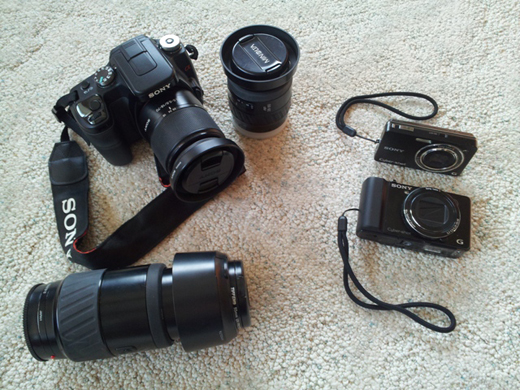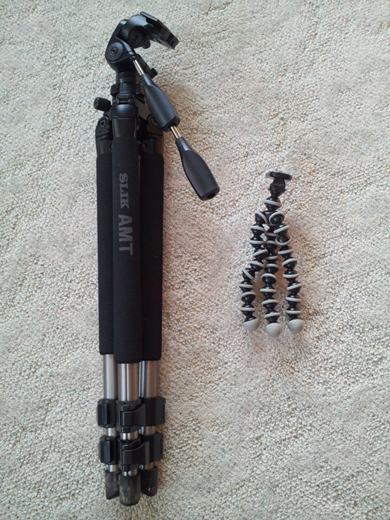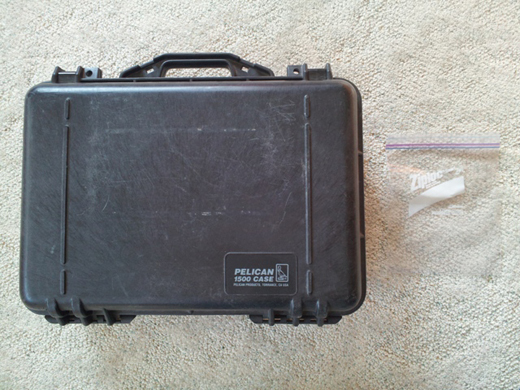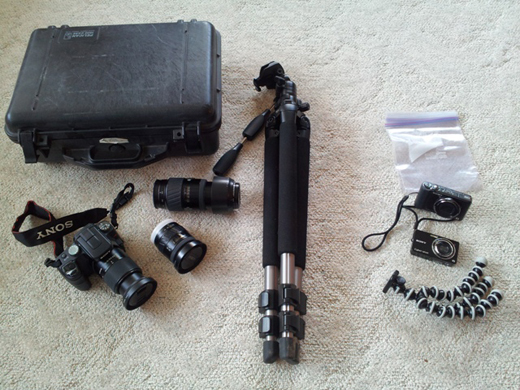LAST UPDATED: May 1st, 2015
Written by Bowhunting.com contributor Todd Koenig of RecordingtheOutdoors.com.
When sharing your bowhunting adventures, it helps to have quality pictures of your hunt. To do this, you must have a camera, be proficient in using it, and have a general plan in mind for the type of images you want to capture. If you take your time, you will have quality photographs that you will be able to share with your family and friends for years to come. In this three part article, I will share some options for choosing the right camera gear, reveal helpful tips for selecting camera features, and offer advice for setting up your scene.
I’ll admit I am not a professional photographer however I have always had a great interest in photography and consider it one of my favorite hobbies. This interest stems from my childhood when the only gift I wanted as a 9 year old was a camera for Christmas. With my camera in tow, I was ready to capture all of my hunting, trapping, fishing, and general outdoor adventures. And thus, the continual learning process as a photographer began. Throughout this journey, I was lucky enough to take photography classes and seminars in both college and through local camera specialty stores.
Once your trophy is down it is time to capture the moment. However, your ability to do it right depends on the choices in photographic equipment you have made.
A Three Part Series
In this first article, I will discuss lightweight gear choices for your bowhunting adventures. In part two, I will share useful camera settings to use during your hunt. I will wrap it up in part three with ideas on how to produce pictures that will not only make you happy, but potentially even make you some money! As a bowhunter, it seems there is always too much gear I am taking with me on my hunts. Depending on the type of hunt (a leisurely afternoon hunt, an all-day sit, or a 10 day excursion), space and weight are always limited. I typically bring at least one camera, sometimes two, and a tripod with me on all my hunts. Unfortunately, when hunters are forced to limit their space and weight, photographic gear tends to be the first to go. I will help you make wise choices when choosing your photographic gear so you never have to leave home without it.
Dump Your Film Camera
When photographing your bowhunting adventures, a digital camera is the only way to go. Some people continue to use their film camera instead of investing in a digital camera. I would highly advise against this! There is nothing worse than taking the shot of a life time and getting the pictures back to find something went wrong. Today’s digital cameras allow you to instantly see your results and retake if necessary.
A DSLR camera and lens are great, but this combination weighs in at 3.6 pounds vs. my 2 point & shoot cameras that take up little space and weigh only 14 ounces.
A Better Choice
There is no argument that advanced digital SLR cameras will give you the most control over your photographic work. In most cases, they do not lend themselves the best for hunting trips because of their weight and size. The only way you are going to get pictures of your bowhunting/outdoor adventures, though, is to bring your camera with you. It has to have features that are easy for you to use. I would recommend a mid to high end point and shoot camera to take along on your hunting adventures.
To ensure you bring a digital camera with you on all your hunts, carefully compare your choices. Remember to keep your camera’s size small and weight minimal. With practice and planning, along with the help of my next two articles, you will be a happy hunter with plenty of pictures to share with your family and friends.
Tripods
Besides your lightweight camera, it is also extremely helpful to have a tripod. Before you dismiss this essential piece of gear, you need to know that there are many lightweight options for today’s adjustable outdoor tripods. Using a tripod will allow you to take quality pictures. Being lightweight is not the only feature that today’s outdoor tripods have, many also include flexible adjustable legs that allow you to attach it to anything. I have attached mine to deer stands, trees, fence posts, my backpack, and even cattails. By straightening the legs it will also function as a traditional tripod.
My large Slick tripod weighs in at 5.4 pounds and takes up significant space compared to my Joby GorillaPod which weighs in at 6.2 ounces and takes up minimal space.
Protection
There are several choices for storing and protecting your equipment. While my hardcover camera case gives me the ultimate protection for impact and moisture, it does not fit well in my climber stand or bowhunting backpack. To protect your camera from wet conditions, I have had great luck using heavy duty freezer bags to protect my cameras. This disposable option has allowed me to easily stuff my camera in my jacket or pack with little worry of damage from moisture. I always bring extras in case of a puncture or loss of a bag.
My Pelican hard case offers superior camera protection, but at a heavy price. It is big and weighs 7.8 pounds compared to the 3 freezer storage bags that weigh .8 ounces and can fit into any hunting jacket.
Cleaning Kit
Anytime I bring my camera on an adventure I also bring a small cleaning kit. This kit helps to clean the lens in the event it is exposed to water drops, dust, or dirt. Besides helping clean your camera, I use my kit to clean my optics as well. My kit includes a small air puffer and brush, which is used to blow off and brush away any dirt, dust or debris. I also include moist lens cleaning wipes, cleaning drops, lens paper, and a lens cloth. These four items all fit into the palm of my hand and weigh next to nothing.
Comparing my gear on the left (16.8 total pounds) to that on the right (1 pound, 5 ounces) it is easy to see why I choose to take my digital point and shoot cameras, flexible tripod, and freezer bags along with me when space and weight are a concern.
Hopefully I have convinced you to bring a camera along to capture your next bowhunting adventure. If you are planning a unique hunt or the hunt of a lifetime, bring two digital point and shoot cameras along and they still will take up less than half the space and weight of a DSLR. Before you jump up from your computer to purchase a digital point and shoot camera, you should wait for my next article which will cover the essential features you will want to look for in your bowhunting camera. Until next time……









